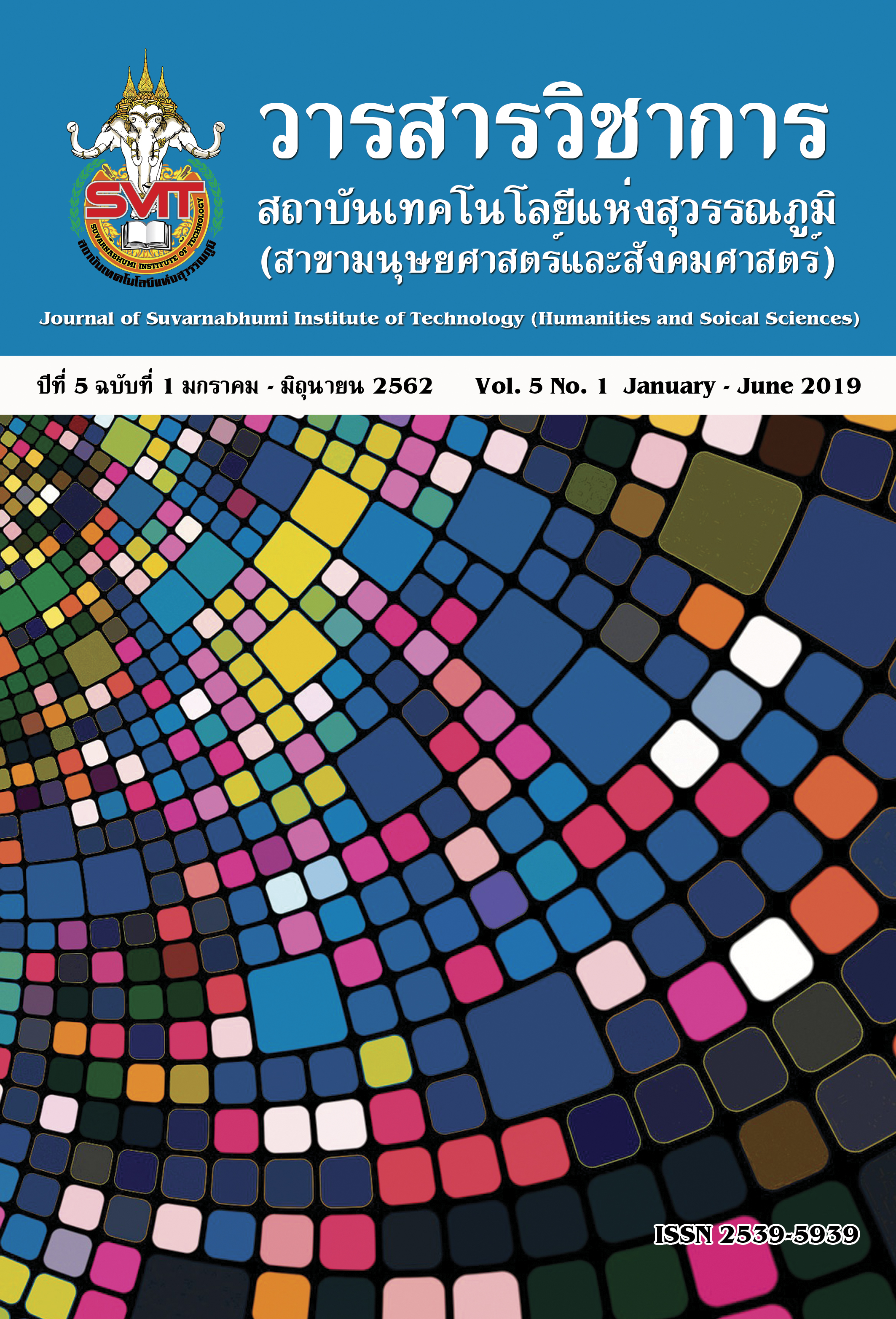DEVELOPING SELF-CONFIDENCE IN STUDENTS LEARNING ENGLISH LISTENING & SPEAKING SKILLS II. CASE STUDY: STUDENTS FROM THE DEPARTMENT OF SERVICE INDUSTRY AND LANGUAGE INNOVATION KASETSART UNIVERSITY, KAMPHAENG SAEN CAMPUS
Keywords:
Self-confidence, Learning English Listening & Speaking Skills II, Motivation, Higher EducationAbstract
The purpose of this research were to investigate the relationship between learner’s self-confidence and their listening and speaking skills proficiency. In classrooms studies, activities, and presentations will all be examined to boost their confidence. The aim of this research was to learn the students’ needs, understand their learning process, and raise students and educators awareness about the importance of self-confidences in students’ English listening and speaking skills. This research was based on the learner’s ability to trust themselves in order to increases their level of self-confidences. The case study consisted of 98 first-year students in the Department of Service Industry and Language Innovation at Kasetsart University, Kamphaeng Saen Campus. This study was conducted in the second semester of the academic year of 2017/2018. The sample consisted of 85.71% females and 14.28% males, first-year students. The analysis of the questionnaire results revealed that the learners strongly support the importance of self-confidences as an affective factor in improving their performances. There were five instrument used in collecting data; in class instructions, observations, questionnaire surveys, testing’s and speaking activities. These encouraged the first-year student’s to see their view points about the importance of having a higher level of self-confidences in their English studies. The findings of the research showed that role playing activities and giving group and self-presentations can improve students’ self-confidence and be able to work together productively. From this study, the researcher found positive result from the findings. Students were able to speak English through a range of materials, express their ideas freely, feel more confident with their ability and they became more creative.
References
Berk, R.A. (2003). Professors are from Mars, Students are from Snickers: How to write and deliver humor in the classroom and in professional presentations. Sterling, V.A. Stylus Publishing.
Bligh, D.A. (1972). What’s the use of lectures? Harmondsworth, Middlesex, England, Penguin Books.
Byung-Eun, C. (2004). Issues Concerning Korean Learners of English: English Education in Korea and Some Common Difficulties of Korean Students. The East Asian Learner Vol. 1 (2) Nov. 2004, Pg. 5.
Cashin, W.E. (1985). Improving Lectures, Idea Paper No 14, Manhattan, KS: Centre for Faculty Evaluation and Development, Kansas State University.
Clinchy (1995). Connected Approach to the Teaching of Developmental Psychology. Enhancing Student Learning: Seven Principles for Good Practice. The Seven Principles Resource Center. Winona State University. https://www.crlt.umich.edu/gsis/p4_6
King, A. (1995). Designing the instructional process to enhance critical thinking across the curriculum: Inquiring minds really do want to know: Using questioning to teach critical thinking. Teaching of Psychology, 22 (1), 13-17.
Garg, S., & Gautam, A. (2015). Learning English can change your life for the better. International Journal of English Language, Literature and Humanities, (II).
Hopkins, D. (2008). A Teacher’s Guide to Classroom Research. (4 ed.). New York: Open University Press.
Meyers, C., & Jones, T.B. (1993). Promoting Active learning: Strategies for the college classroom. San Francisco: Jossey-Bass.
Maslow, A. H. (1954). Motivation and Personality: A preface to motivation theory. Psychosomatic Med., 1943, 5, 85-92. Merriam Webster Dictionary, Self-confidence, https://www.merriam-webster.com/dictionary/self- confidence
McManus, (2001). The Two Paradigms of Education and the Peer Review of Teaching, “Learning Centered Paradigm.”
Palmer, David (2007). Teaching Science: The Journal of the Australian Science Teachers Association. Autumn 2007, Vol. 53 Issue 1, p38-42. 5p.
Park, C. (2003). Engaging Students in the Learning Process: the learning journal. Journal of Geography in Higher Education, Lancaster University, UK Vol. 27, No. 2, July 2003, pp. 183–199.
Pekrun, R. Goetz, T. Titz. W. & Perry, R. P. (2002). Academic emotions in students self-regulated learning and achievement: A program of qualitative and quantitative research. Education psychologist, 37 (2), 91-105.
Pintrich, P. R. (2003). A motivational science perspective on the role of student motivation in learning and teaching contexts. Journal of Educational Psychology, 95 (4), 667-686.
Naithani, P. (2008). Reference framework for active learning in higher education BIT International Center, Kingdom of Bahrain, p2.
Seeler et al., (1994). D.C. Seeler, K.H. Turnwald, K.S. Bull “From teaching to learning, Journal of Veterinary Medical
Education, 21 (1.) (1994). Shrauger, J. Sidney; Schohn, Mary (1995-09- 01). "Self-Confidence in College Students: Conceptualization, Measurement, and Behavioral Implications". Assessment. 2 (3): 255– 278.
Wallece, T., Stariha, W. E. & Walberg, H. J. (2004). Teaching speaking, listening and writing. France: Typhon.
Weimer, M. (2018). Five Keys to Motivating Students
https://www.facultyfocus.com/articles/teaching-professor-blog/five-keys-student-motivation/
Wikipedia, Self-confidence, https://en.wikipedia.org/wiki/Self-confidence
Downloads
Published
Issue
Section
License
บทความที่ได้รับการตีพิมพ์เป็นลิขสิทธิ์ของวารสารวิชาการ สถาบันเทคโนโลยีแห่งสุวรรณภูมิ
ข้อความที่ปรากฏในบทความแต่ละเรื่องในวารสารวิชาการเล่มนี้เป็นความคิดเห็นส่วนตัวของผู้เขียนแต่ละท่านไม่เกี่ยวข้องกับสถาบันเทคโนโลยีแห่งสุวรรณภูมิ และคณาจารย์ท่านอื่นๆในสถาบันฯ แต่อย่างใด ความรับผิดชอบองค์ประกอบทั้งหมดของบทความแต่ละเรื่องเป็นของผู้เขียนแต่ละท่าน หากมีความผิดพลาดใดๆ ผู้เขียนแต่ละท่านจะรับผิดชอบบทความของตนเองแต่ผู้เดียว





